 Most viewed - KANAGAWA 神奈川県 Most viewed - KANAGAWA 神奈川県 |
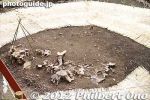
The original tree might still grow.79 views
|
|
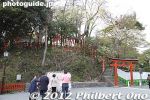
On the left of the Hongu is Maruyama Inari Shrine.79 views
|
|

Rock Garden79 views
|
|
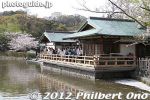
Rest house in the Japanese garden.79 views
|
|
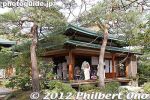
Tea ceremony house 79 views
|
|
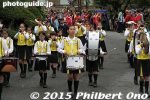
Marching Band Hakone 21. マーチングバンド箱根2179 views
|
|
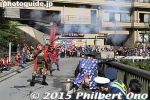
They fired twice.79 views
|
|
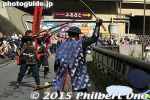
79 views
|
|
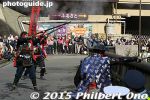
Very loud bang.79 views
|
|
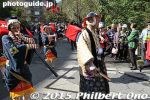
79 views
|
|
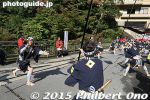
79 views
|
|
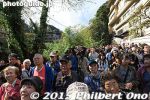
Narrow road79 views
|
|

Firing matchlock guns at Chimoto at 2 pm. 小田原北條鉄砲衆79 views
|
|
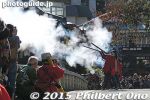
79 views
|
|
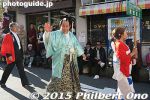
Hanada Masaru79 views
|
|
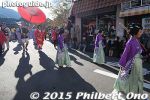
79 views
|
|
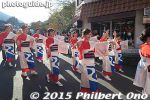
79 views
|
|
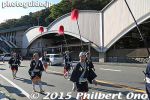
79 views
|
|
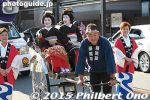
Hakone geisha on rickshaw79 views
|
|
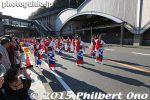
79 views
|
|
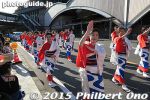
The procession crossed the Yumoto Ohashi Bridge and ended at 2:30 pm at Hakone Fujiya Hotel.79 views
|
|

Bon Dance Panel 4 - From Bon Odori to Bon Dance79 viewsIn the 1950s, Hawai’i's Japanese community shifted from the issei to the nisei and the "bon odori" began transforming into a Hawai’i-style "bon dance."
Bon dances got infused with new songs based on Hawai’i's lifestyle and Hawai’i-themed songs composed in Japan. The old "Hole-hole-bushi" song sung by Japanese laborers in the sugar plantations got a new version composed by Japanese composer Raymond Hattori in 1957 at Columbia Records in Japan. In the 1960s, Buddhist bon dance songs like Bukkyo Odori, Daishi Ondo, and Shinran Ondo were also introduced. Likely due to the bon dance's strong connection with Buddhist temples. ("Bukkyo" means Buddhism, "Daishi" is an honorific title for a Buddhist sect's founder, and "Shinran" is the name of the founder of the Jodo Shinshu Sect.)
Even today, the bon dance is the largest social gathering of nikkei in Hawai’i. Even without understanding the Japanese language, young and old alike can dance to Japanese songs and enjoy the bon dance. Originally, the bon odori was for the Japanese to reaffirm their Japanese identity. After the war, it has become an event reflecting Hawai’i's melting pot. Today, we often see people from other ethnicities enjoying the bon dance.
Panel photos: Top photo is a bon dance food stand at Kona Hongwanji on the Big Island. Bottom photo is a bon dance at Lahaina Jodo Mission on Maui showing non-nikkei dancers.
|
|

Bon Dance Panel 8 - Iwakuni Ondo Aiko Kai and James Kunichika79 viewsIn the 1920s, an Iwakuni Ondo group was formed. They obtained a taiko drum and other implements and started practicing for public performances. Such a group played an important part in having the Iwakuni Ondo survive in Hawai’i.
In 1951, popular Honolulu bon dance singer James Kunichika (1915–2012) formed the Iwakuni Odori Aiko Kai fan club together with taiko drummer Goichi Fukunaga. (Kunichika was born on Kauai and moved to Honolulu. Iwakuni was his mother's hometown.) At the time, it was Oahu's only official fan club for the Iwakuni Ondo. It was composed only of Yamaguchi Prefecture immigrant descendants. From the 1980s, their membership increased dramatically. By 2000, they had over 200 members. The Honolulu mayor and Lieutenant Governor at the time were also members.
The Iwakuni Ondo's lead singer has to memorize long Japanese lyrics lasting 10 to 15 min. So it was important to train the younger generations. By the mid-1990s, Japanese-speaking nikkei in Hawai’i were almost gone and Kunichika was practically the only bon dance lead singer on Oahu who could sing in Japanese.
Kunichika made efforts to train the non-Japanese-speaking sansei as successor singers. He also worked hard to perpetuate and sustain the Iwakuni Ondo on the neighbor islands.
For his efforts and accomplishments, he received numerous awards including the Living Treasure Award from the Honpa Hongwanji Mission of Hawai’i and the 2003 Pan-Pacific Festival Silversword Award.
Panel photos: Top is Iwakuni Ondo Aikokai soon after it was formed. Bottom is Kunichika (second from left) at home teaching Iwakuni Ondo to a few younger people.
|
|

Places on Oahu that hold a bon dance.79 views
|
|
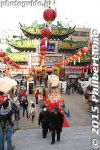
79 views
|
|

Daibutsu Great Buddha, Kamakura79 views
|
|

Clothing stall78 views
|
|

Kame-no-i Well (Jug Well)78 views
|
|

78 views
|
|

Meigetsu-in Yagura cave.78 views
|
|

Mini theater at the Yokohama Monogatari pavilion.78 views
|
|

78 views
|
|

78 views
|
|

On top deck.78 views
|
|

Below deck on the Kanko Maru. This deck was air-conditioned.78 views
|
|

78 views
|
|

78 views
|
|
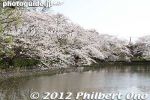
Cherry blossoms line the edge of Genpei Pond. 源平池78 views
|
|
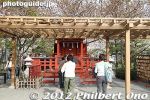
Benzaiten Shrine78 views
|
|
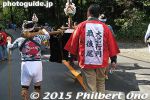
End of the procession.78 views
|
|
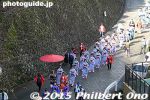
78 views
|
|
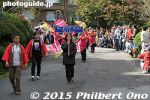
78 views
|
|
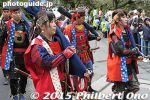
Matchlock gunners78 views
|
|
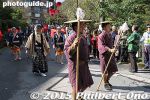
78 views
|
|
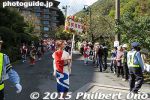
78 views
|
|
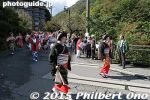
78 views
|
|
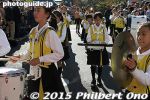
78 views
|
|

Odawara matchlock gunners 小田原北條鉄砲衆78 views
|
|
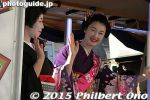
78 views
|
|
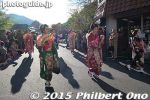
78 views
|
|
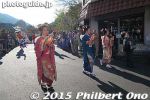
78 views
|
|
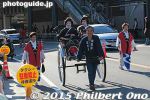
78 views
|
|
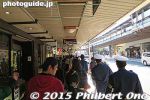
78 views
|
|

Bon Dance Panel 3 - The Resurrection of Bon Dance After the War78 viewsWhen the Pacific War broke out, cultural activities by the Japanese immigrants were banned. No more bon dances.
It wasn't until the summer of 1947 when a bon dance was finally held again. It was a fundraiser for a war memorial.
In 1948, bon dances saw a full-fledged ressurrection. In 1951, the biggest bon dance was not at a Buddhist temple, but at Ala Moana Park in Honolulu. It was held jointly by nisei veterans clubs (100th Infantry Battalion Veterans, 442nd Veterans Club, MIS Veterans Club, and 1399th Veterans Club). The postwar bon dances were held to memorialize the war dead.
Panel photo: Top photo is a July 1947 Hawai’i Hochi newspaper ad for a bon dance to raise funds to build a memorial. Bottom photo is a Hawai’i Hochi newspaper article about the 1951 bon dance held jointly by nisei veterans clubs. Headline says there were 2,000 dancers and 30,000 spectators.
|
|

Enoshima is also a cat island. This park as a few stray cats.78 views
|
|

Daibutsu Great Buddha, Kamakura78 views
|
|

In Japanese, these decorations are called take-kazari (literally bamboo decorations) since they are supported by bamboo poles. 竹飾り77 views
|
|
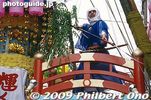
77 views
|
|

Soyu-do Founder's Hall77 views
|
|

77 views
|
|

77 views
|
|

77 views
|
|

77 views
|
|

77 views
|
|

77 views
|
|

77 views
|
|
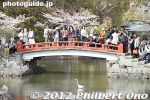
Bridge over Genpei Pond in a Japanese garden full of cherry blossoms.77 views
|
|
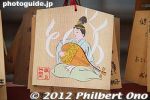
Goddess Benten77 views
|
|
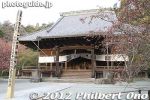
Soshido Hall at Myohonji temple, Kamakura. 祖師堂77 views
|
|
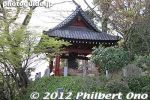
Temple bell77 views
|
|
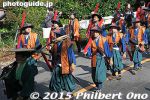
77 views
|
|
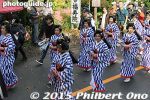
About 80 of the costumers are volunteers recruited from the general public. Women volunteers become ladies-in-waiting. 77 views
|
|
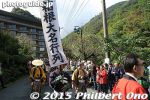
77 views
|
|
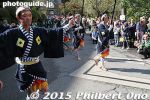
77 views
|
|
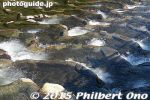
77 views
|
|
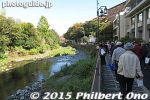
The procession took a lunch break at a hotel called Tenseien from noon to 1:20 pm. 天成園77 views
|
|
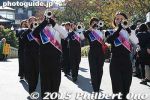
77 views
|
|

77 views
|
|
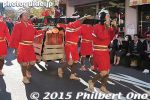
77 views
|
|
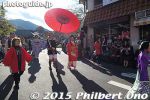
77 views
|
|
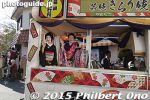
77 views
|
|

77 views
|
|
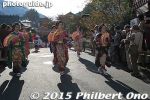
77 views
|
|
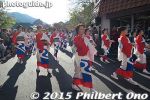
77 views
|
|
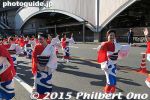
77 views
|
|
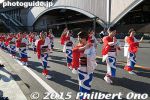
77 views
|
|
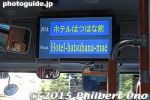
Buses in Hakone are multi-lingual.77 views
|
|

Places on Maui that hold a bon dance.77 views
|
|
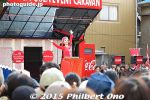
77 views
|
|

Enoshima Shrine's Hetsumiya Shrine. 辺津宮:旧下之宮。田寸津比賣命を祀る。77 views
|
|

Enoshima Shrine's Nakatsumiya Shrine. 中津宮 市寸島比賣命を祀る77 views
|
|

Clothing shops and the outdoor stage can be seen in the distance.76 views
|
|

The Tanabata streamers are made by local businesses who may spend a few hundred thousand to a few million yen to make these decorations. They compete in a contest and the winners receive good publicity.76 views
|
|

76 views
|
|

76 views
|
|

Meigetsu-in Yagura cavern.76 views
|
|

76 views
|
|

76 views
|
|
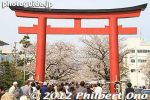
Dankazura path to Tsurugaoka Hachimangu Shrine.76 views
|
|
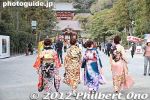
76 views
|
|
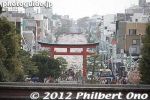
Dankazura path as seen from the top of the Stone Steps.76 views
|
|
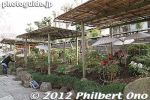
The shrine's Japanese garden includes a Peony Garden. A small admission is charged.76 views
|
|
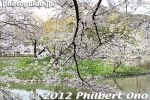
76 views
|
|
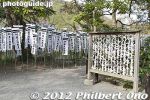
76 views
|
|
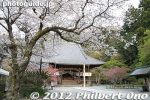
76 views
|
|

Lead car76 views
|
|

The procession is led by this guide car.76 views
|
|
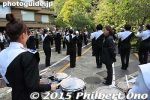
Band played during the lunch break.76 views
|
|
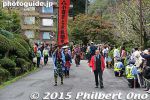
76 views
|
|
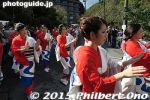
76 views
|
|
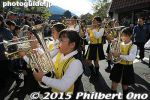
76 views
|
|

76 views
|
|
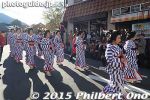
76 views
|
|
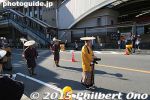
In front of Hakone Yumoto Station at about 2:10 pm.76 views
|
|
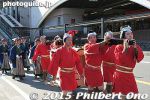
76 views
|
|
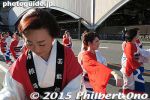
76 views
|
|
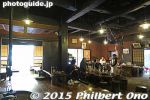
Inside Amasake Chaya, a teahouse for travelers. 76 views
|
|

Top photo is some of the soldiers in the 100th Infantry Battalion at Camp McCoy in Wisconsin.76 viewsBottom photo are 100th Infantry Battalion soldiers taking a short break in Menton, France in 1944.
|
|
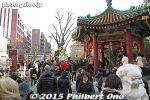
76 views
|
|

A torii marks the entrance to Enoshima's main drag of tourist souvenir shops.76 views
|
|

76 views
|
|
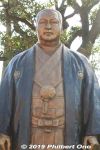
Statue of the late, great Yokozuna Kitanoumi Toshimitsu. I love sumo, but with the premature deaths of great wrestlers like Kitanoumi and Chiyonofuji in recent years, 76 viewsI've been having ambivalent feelings toward sumo because of how it seriously affects the person's health.
|
|

Food stalls serving Hawaiian-like food.75 views
|
|

Another stage was in the C.I.Q Plaza. Standing room only.75 views
|
|

They also have a Tanabata dance parade along the main street led by the Shonan Hiratsuka Orihime weavers. 湘南ひらつか織り姫.75 views
|
|

75 views
|
|
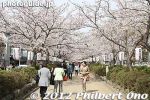
Cherry trees along the Dankazura path to Tsurugaoka Hachimangu Shrine.75 views
|
|
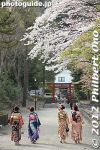
Kimono ladies and cherry blossoms.75 views
|
|
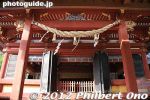
Wakamiya Shrine, Tsurugaoka Hachimangu Shrine's only building that is an Important Cultural Property. 若宮75 views
|
|
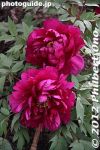
Exotic peonies at Tsurugaoka Hachimangu Shrine's Japanese garden.75 views
|
|
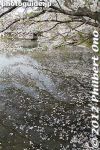
75 views
|
|
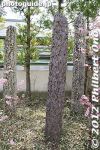
Petrified rocks75 views
|
|
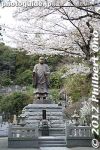
Statue of Nichiren.75 views
|
|
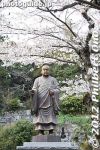
Statue of Nichiren under cherry blossoms at Myohonji temple, Kamakura.75 views
|
|
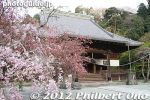
Soshido Hall at Myohonji temple, Kamakura.75 views
|
|
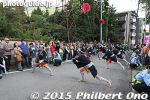
75 views
|
|

75 views
|
|
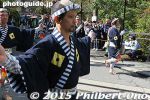
75 views
|
|
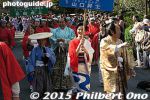
75 views
|
|
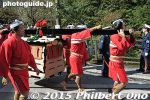
75 views
|
|

75 views
|
|
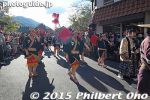
75 views
|
|

75 views
|
|
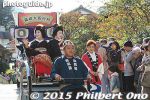
75 views
|
|

75 views
|
|
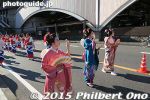
75 views
|
|

Entrance to the special exhibition room.75 views
|
|

Bon Dance Panel 7 - Iwakuni Ondo, a Case Study75 viewsOf the many bon dance songs used in Hawai’i, there are songs that remained while others disappeared over the years as the times changed. What were the factors that caused the songs to remain or disappear?
Iwakuni Ondo is one of the three bon dance music genres that remain in Hawai’i. It is performed live with the singer on the yagura tower holding up an umbrella and singing a song having seven-and-five syllables. Many of the songs expressed the passionate emotions of the Japanese people. The songs included Japanese historical episodes and war stories such as Nikudan Sanyushi (Three Human Bullets 肉弾三勇士, about three heroic Japanese soldiers who sacrificed themselves while blowing up enemy lines in Shanghai in 1932) or Sakuma Taii Monogatari (Sakuma Teicho 佐久間艇長 or 佐久間大尉物語 about Tsutomu Sakuma, the brave commander who died when his submarine that sank off Yamaguchi Prefecture in 1910). Such songs are still popular in Hawai’i today and the yonsei and gosei have learned the story even if they don't understand Japanese. A taiko drummer at the bottom of the yagura accompanies the singer and sets the beat. The dancers dance clockwise, spinning their arms elegantly.
Most immigrants from Yamaguchi Prefecture came from specific regions so they had a strong hometown affinity among themselves. From the early 1900s, they formed hometown associations according to their village or town. These associations were later unified by the Yamaguchi Prefecture Kenjinkai Association formed in 1926. To reinforce their hometown unity, they held picnics, movie screenings, concerts, stage performances, and bon dances.
After the war, new Iwakuni Ondo songs were created. They were about Hawai’i. One song called "Nisei Soldiers" (ああ第442部隊) was about the 442nd RCT composed by Mune Ozaki to memorialize them. This song was often sung during the nisei's heyday in Hawai’i.
Panel photos: Top is James Kunichika singing Iwakuni Ondo on the yagura at a bon dance in 2001. Bottom photo is dancers dancing to the Iwakuni Ondo at a bon dance.
|
|

Aloha shirt for 100th Infantry Battalion veterans with a Japanese and Hawaiian design. The design includes torii, Japanese castle, shamisen, pagoda, pineapple, Gion Matsuri float, and "One Puka Puka" (100).75 viewsBelow are military medals, badges, and patches.
|
|
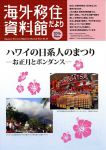
Cover of the museum's newsletter (Winter 2016 issue) publicizing the "Hawai’i's Nikkeijin Matsuri—Oshogatsu and Bon Dance" exhibition.75 views
|
|
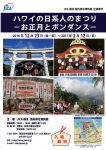
Museum's exhibition flyer.75 views
|
|
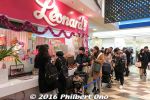
After seeing the exhibition, you might want to stop by the neighboring Yokohama World Porters shopping mall and get a malasada from Leonard's in the Hawaiian Town section.75 viewsIt might be crowded though, especially on weekends/holidays.
|
|

75 views
|
|

Bruce Shimabukuro (Jake's brother) gives a ukulele workshop.74 views
|
|

74 views
|
|

Tanabata decoration made of plastic PET bottles.74 views
|
|

The Hokule'a visited Yokohama from Hawaii in 2007.74 views
|
|
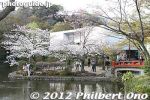
Genpei Pond in a Japanese garden full of cherry blossoms.74 views
|
|
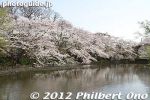
74 views
|
|
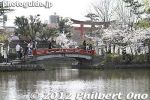
Bridge connects to a small island with Benzaiten Shrine.74 views
|
|
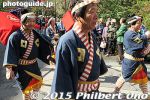
74 views
|
|
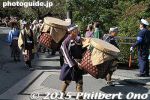
74 views
|
|
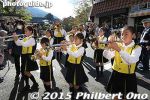
74 views
|
|
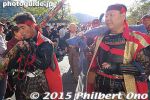
74 views
|
|
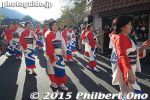
74 views
|
|
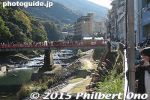
74 views
|
|

Hakone is one of Japan's most famous and popular tourist spots. Hot spring baths, views of Mt. Fuji, and more.74 viewsWith the Hakone Freepass, ride the Odakyu Line from Shinjuku, Tokyo directly to Hakone-Yumoto. Take the Hakone Tozan Railway train to Gora. Ride the Hakone Tozan Cable Car up the slope to to Sounzan. Then take the Hakone Ropeway high above to Lake Ashi for a cruise on a pirate boat to Hakone-machi Port or Moto-Hakone. Dramatic views of Mt. Fuji. Photo: Odakyu Line's Romance Car at Shinjuku Station.
|
|
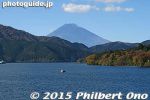
Mt. Fuji becomes more visible as you sail to Moto-Hakone.74 views
|
|
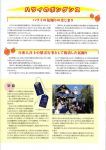
Page 3 gives a history of bon dance in Hawai’i. Lower part explains New Year's worship at Shinto shrines in Hawai’i.74 views
|
|
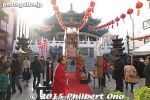
74 views
|
|
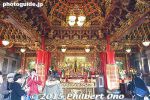
Inside Yokohama Chinatown's main temple called Kwan Tai Temple (Kanteibyo in Japanese 関帝廟).74 views
|
|

View from the back of Enoshima.74 views
|
|

Offerrings to the Daibutsu.74 views
|
|

First you see this small Welcome stage where keiki hula and other performances were held.73 views
|
|

Meigetsu-in Yagura cave.73 views
|
|

About Meigetsu-in Yagura cave.73 views
|
|
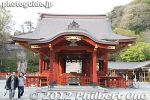
Mai-den sacred dance stage front view. 舞殿73 views
|
|
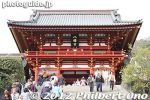
Gate to the Hongu.73 views
|
|
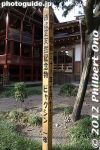
73 views
|
|
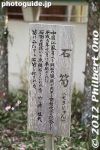
73 views
|
|

Nitenmon Gate at Myohonji temple, Kamakura.73 views
|
|
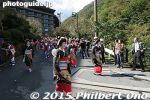
73 views
|
|
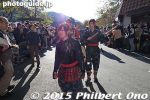
73 views
|
|
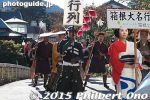
73 views
|
|
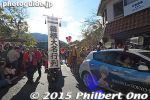
73 views
|
|
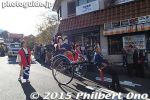
73 views
|
|

Bon Dance Panel 1 - The Japanese in Hawai’i73 viewsHow did the Japanese culture and lifestyle continue in Hawai’i up to today?
The Japanese was originally the largest ethnic group, accounting for over 40% of Hawai’i's population. This percentage began to shrink from the 1930s with the influx of other ethnic groups. By Dec. 1941, they still accounted for 37% of Hawai’i's population. According to the 2000 US Census, they comprised 20% of Hawai’i's population. Today, they are still a major ethnic group in Hawai’i.
By the early 1900s, as much as 70% of sugar plantation laborers were Japanese immigrants. Hawai’i's sugar industry saw explosive growth as it catered to the world market. There was a major labor shortage so they brought in cheap laborers from overseas starting with the Chinese. Later Japan and the Kingdom of Hawai’i signed the Kanyaku Imin agreement which allowed Japanese to emigrate to Hawai’i from 1885.
The early immigrants who worked on the sugar plantations as contract laborers had planned to make money in Hawai’i and return to Japan as rich men. They did not intend to live in Hawai’i permanently. The early Japanese immigrants lived together in their own plantation camps. People from the same hometown or prefecture would form an association and help each other. This lifestyle contributed to the transference of Japanese New Year's traditions and the bon dance to Hawai’i.
Panel photo: 1885 Kanyaku Imin contract for an immigrant named Otsuki.
|
|

Upper left shows a Hawai’i Hochi newspaper (April 2, 1943 issue) with Japanese announcements of the successful enlistment of nisei individuals in the military.73 viewsEach announcement is from the soldier's parents and siblings addressing their local community (like Wahiawa).
Lower left shows Hawai’i Hochi newspaper (May 12, 1943 issue) listing the names of Hawai’i's nisei who have volunteered to enlist in the military (total 2,645).
Right photos show the 100th Infantry Battalion training at Camp McCoy in 1942.
|
|
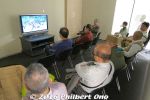
The back of the exhibition room has this small viewing room for video screenings of "Great Grandfather's Drum" about Maui Taiko (led by Kay Fukumoto) and a condensed documentary video by Jun'ichi Suzuki about the nisei vets.73 views"Great Grandfather's Drum" (57 min.) is screened every day of the exhibition at 10 am and 2 pm. Suzuki's film (40 min.) is shown every day at 11:30 am and 3 pm. Suzuki will also give a one-hour talk at the museum on Jan. 14 at 2 pm. Free admission, no reservations required.
|
|
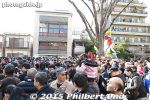
73 views
|
|
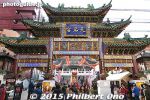
Yokohama Ma Zhu Miao Temple (Masobyo in Japanese 横浜媽祖廟) was built in 2006 to mark the 150th anniversary of Yokohama Port opening to foreign trade.73 views
|
|

Hello Kitty73 views
|
|

Enoshima Yacht Harbor73 views
|
|

73 views
|
|

Kamakura souvenir shop.73 views
|
|

This is what it looks like outside the Osambashi Pier. In the distance is Yamashita Park. It was here where King David Kalakaua arrived in Japan during his world tour in 1881. This fact serves as the basis for the existence of this festival.72 views
|
|

Baseball coach Nagashima Shigeo and judoist Tamura Ryoko72 views
|
|

72 views
|
|

About Soyu-do.72 views
|
|

72 views
|
|
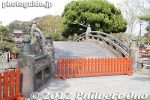
Arched bridge closed to the public.72 views
|
|
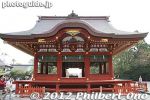
Mai-den sacred dance stage facing the Hongu. 舞殿72 views
|
|
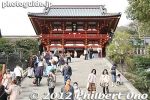
Stone steps going up to the Hongu main worship hall. 大石段72 views
|
|
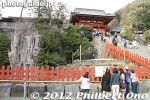
Next to the Stone Steps was a giant gingko tree which fell in a storm in 2010.72 views
|
|
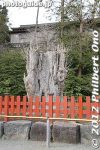
Only a tree stump remains of the gingko tree.72 viewsgiant gingko tree which fell in a storm in 2010.
|
|
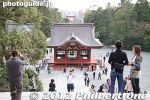
View from the top of the Stone Steps.72 views
|
|
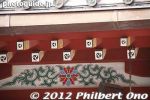
72 views
|
|

Museum of Modern Art, Kamakura72 views
|
|
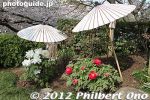
Peony garden at Tsurugaoka Hachimangu Shrine.72 views
|
|
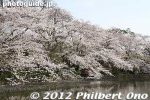
72 views
|
|
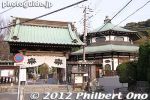
Somon Gate. 10-min. walk from Kamakura Station.72 views
|
|
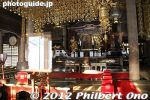
Inside Soshido Hall.72 views
|
|
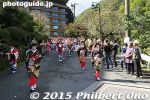
Hakone geisha72 views
|
|
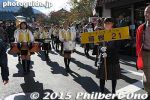
Walked to Chimoto Bridge near the entrance to the Hakone Yumoto. ちもと72 views
|
|
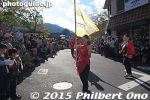
72 views
|
|
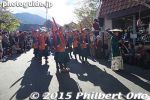
72 views
|
|

You can get off at Owakudani and see some steamy puddles.72 views
|
|
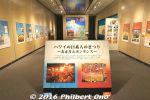
Medium-size exhibition room for the "Hawai’i's Nikkeijin Matsuri—Oshogatsu and Bon Dance" (ハワイの日系人のまつり -お正月とボンダンス-) exhibition.72 viewsUnfortunately, the exhibition has no English explanations so I've created a quick translation of all the panel displays on this web page. (It's not an official translation nor a word-for-word translation, but still very accurate.)
|
|

Oshogatsu Panel 1 - History of Japanese New Year's in Hawai’i72 viewsBefore WWII, the Japanese immigrants (mostly sugar plantation workers) were free to practice their own culture and religion so they celebrated Oshogatsu and other traditional Japanese holidays. However, the war changed all that as the Japanese immigrants were viewed as associates of the enemy. Japanese community leaders were arrested and detained. Japanese language schools, Buddhist temples, and Shinto shrines were shut down and dissolved. Using the Japanese language in public was banned, and gatherings of 10 or more Japanese people were prohibited. Therefore, the Japanese immigrants could no longer hold their festivals like Oshogatsu.
However, after the war, these restrictions were lifted and Japanese immigrants could again celebrate New Year's by visiting temples and shrines, pounding mochi, etc. We can see how their New Year's traditions developed in Hawai’i.
Panel photos: Upper left photo is Hawai’i Daijingu Shrine in Honolulu during New Year's, upper right is mochi pounding at Kahului Hongwanji on Maui, lower left is New Year's decorations at a Japanese American's home (Stephanie Ohigashi), lower right is a family at home having ozoni soup for New Year's (Stephanie Ohigashi).
|
|
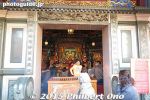
72 views
|
|

72 views
|
|

Hello Kitty dessert72 views
|
|

72 views
|
|

Escalator service. If you don't want to climb all those stairs, take the Escalator. (Small admission charged)72 views
|
|

72 views
|
|

72 views
|
|

Cat on Enoshima72 views
|
|
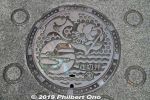
Manhole in Oyama, Isehara, Kanagawa Prefecture.72 views
|
|

71 views
|
|

Very creative.71 views
|
|

71 views
|
|
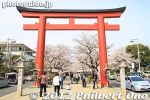
Dankazura path to Tsurugaoka Hachimangu Shrine.71 views
|
|
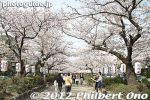
Dankazura path to Tsurugaoka Hachimangu Shrine is lined with many cherry trees which bloom in April (later than in Tokyo).71 views
|
|
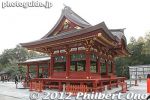
Mai-den sacred dance stage.71 views
|
|
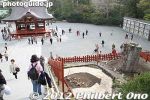
Spot where the gingko tree was.71 views
|
|
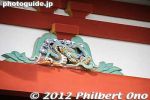
71 views
|
|

71 views
|
|
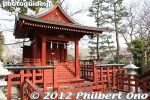
Benzaiten Shrine71 views
|
|
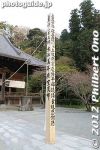
71 views
|
|
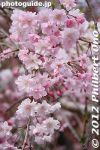
71 views
|
|
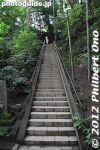
71 views
|
|
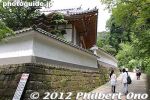
71 views
|
|
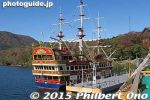
71 views
|
|
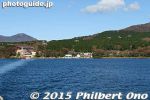
71 views
|
|

Sunset at Moto-Hakone 71 views
|
|
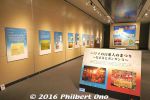
The left wall has exhibit panels explaining about bon dance in Hawai’i.71 views
|
|

Oshogatsu Panel 2 - New Year's Preparations71 viewsFor the Japanese and nikkei in Hawai’i, buying food and other things for New Year's is an important custom. To have everyone go out and buy the same things in preparation for New Year's reinforces their Japanese identity. Let's see what they sell for New Year's in Hawai’i.
At Nijiya Market, a popular Japanese supermarket in Honolulu, they sell New Year's merchandise like rice for making mochi, sake, soba noodles, soba broth, kinako, anko, kirimochhi, otoshidama envelopes, round mochi (kagami mochi), chopsticks, naruto, kamaboko, and date-maki (sweet rolled omelette). For osechi meals, they sell black beans, tazukuri sardines, kinton, fried egg, and kobumaki.
In Hawai’i, a popular members-only supermarket called Marukai imports food and merchandise from Japan. At the end of the year, the store is full of New Year's food especially osechi dishes. Almost like a supermarket in Japan.
Don Quixote has daily necessities, clothing, fish, meat, a bakery, medicines, and a Japanese food section. It also sells kadomatsu bamboo decorations, round mochi, and osechi dishes like lotus root and gobo.
Panel photos: Top is Nijiya, lower left is Marukai, and lower right is Don Quixote.
|
|

Corner dedicated to nisei soldiers.71 views
|
|
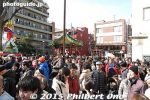
71 views
|
|
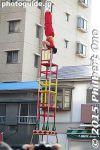
71 views
|
|
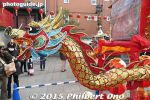
Dragon71 views
|
|
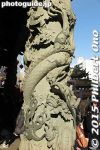
Carved pillar71 views
|
|
| 3523 files on 14 page(s) |
 |
 |
9 |  |
 |
|